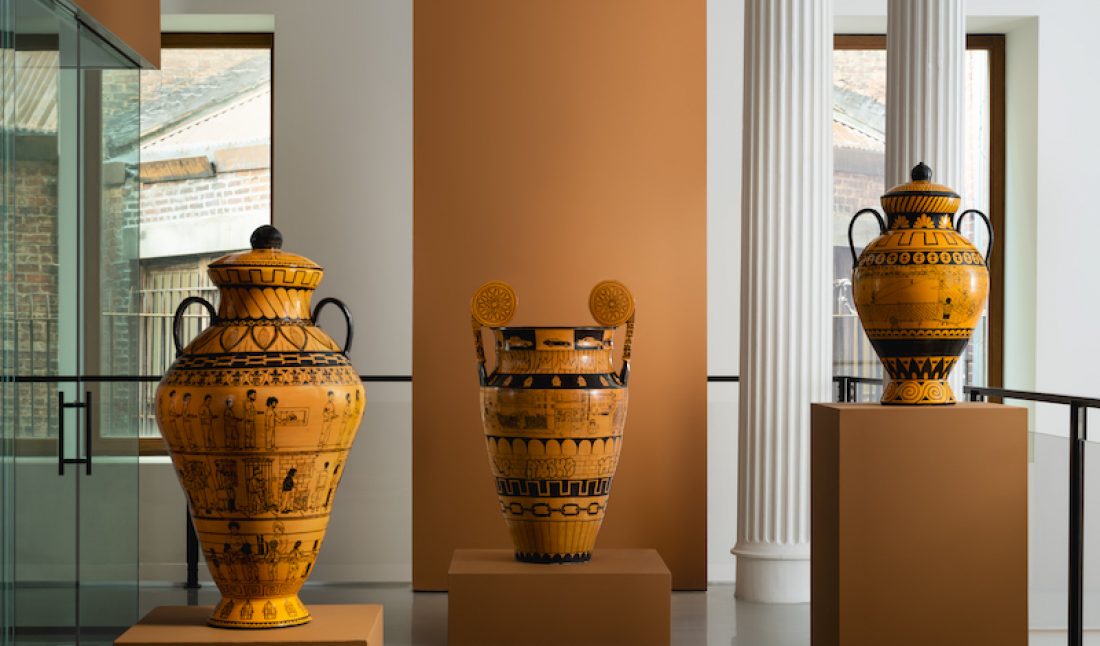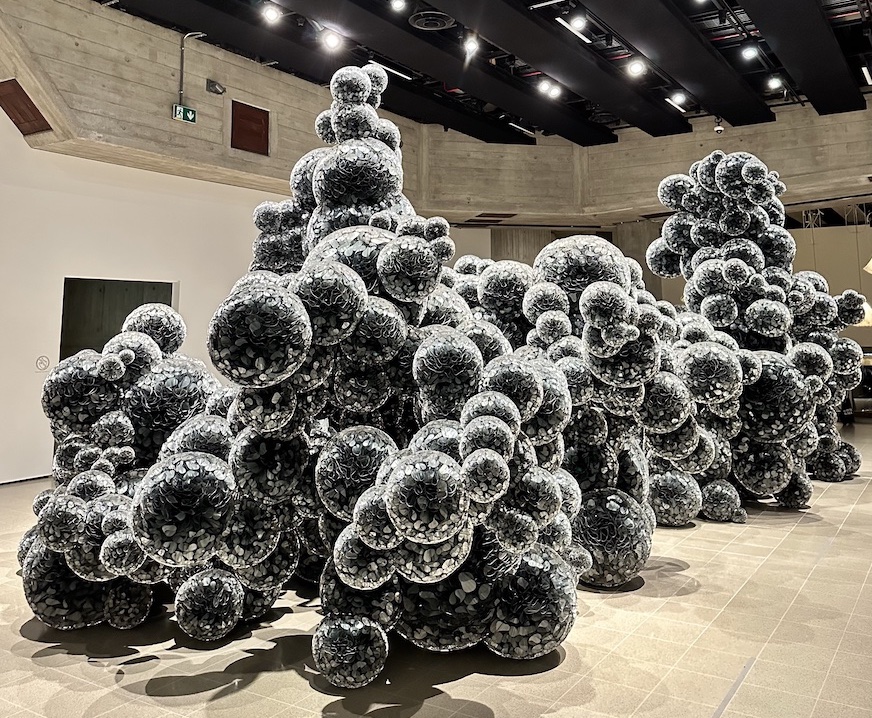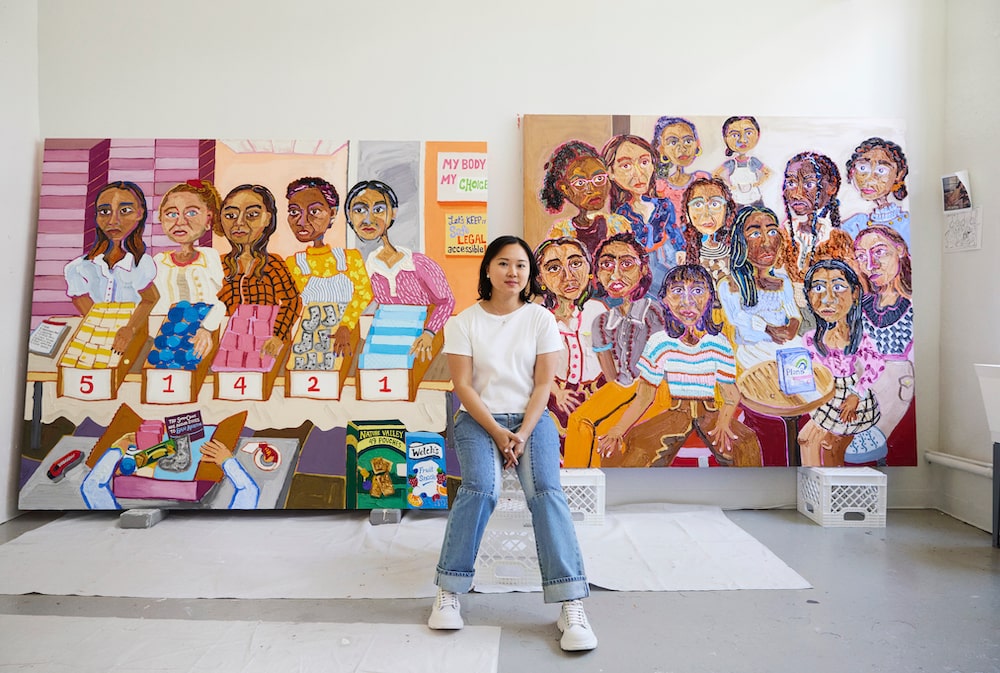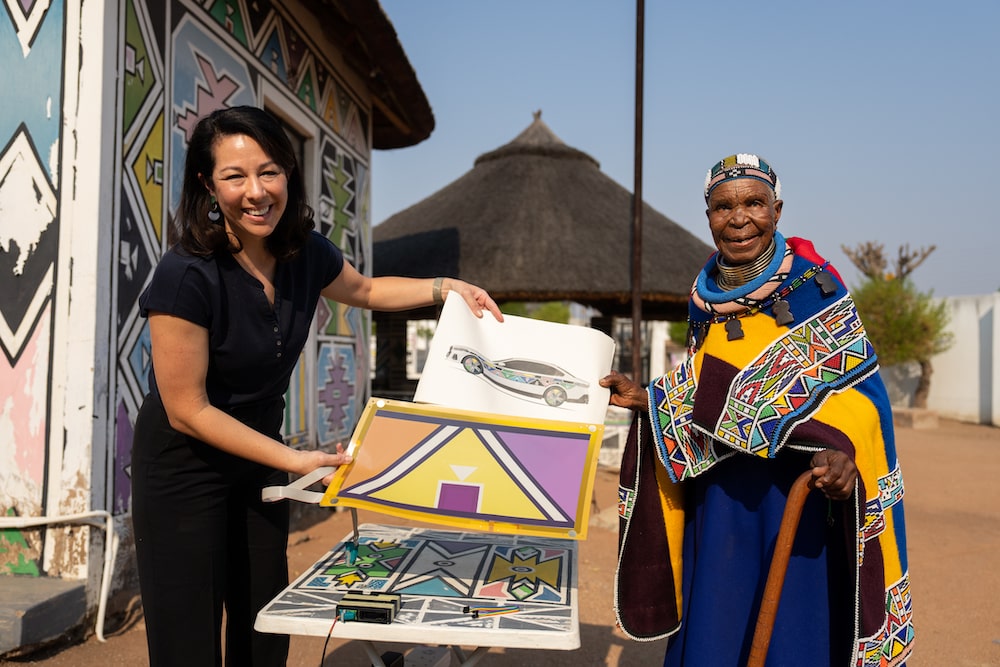Roberto Lugo’s Exhibition of New Work at R & Company in New York
Roberto Lugo’s “The Gilded Ghetto” is on view this fall at R & Company in New York. An exhibition of his newest works, up through October 27, it is the artist’s first solo show in the city, offering a more biographical narrative.
Lugo’s clay practice marries the motifs of ancient and historic ceramics—think Greek black-and-orange urns or Baroque decorative vases—with contemporary iconography. The Philadelphia-based artist places images and busts of notable Black figures like Supreme Court Justice Ketanji Brown Jackson, the Notorious B.I.G., Prince, Frederick Douglass, and more on statuesque vessels full of color, pattern, texture, and ornamentation. Imagery from his community and Afro-Latino culture are depicted to tell stories that bring viewers in from beyond the art world. They are designed to connect, to say you belong here, to inspire and encourage creative self-expression.
 Roberto Lugo, portrait by Joe Kramm.
Roberto Lugo, portrait by Joe Kramm.
Roberto Lugo Calls Himself the Village Potter
His show at R & Company is his most personal yet, delving into his own narrative with life-size pieces and wall-mounted sculptural works. Lugo’s practice is one of generosity. Having taken a pottery class by chance in college, he discovered he not only liked making objects from clay, he was good at it and received encouragement from his teachers. That possibility of creative discovery, and the transformative power of art, is something he is driven to share with others in his own community and beyond. Lugo does this through the Village Potter, which makes pottery more accessible, as well as taking part in residencies at spaces like Grounds For Sculpture in New Jersey or at the Cincinnati Art Museum where visitors were able to see him make pieces onsite.
Earlier this year, Whitewall spoke with Lugo about inspiring joy, connection, and creativity in others through clay.
 Installation of “Roberto Lugo: The Gilded Ghetto,” photo by Joe Kramm, courtesy of R & Company.
Installation of “Roberto Lugo: The Gilded Ghetto,” photo by Joe Kramm, courtesy of R & Company.
WHITEWALL: Your work references ancient styles of pottery, with a twist of contemporary imagery and style. How did you arrive at this way of making?
ROBERTO LUGO: What I’m trying to do is hybridize these historic motifs that people are already familiar with and synthesize them with my story and the things that I’ve seen in my life. I look at the Greek pottery as a platform to talk about culture because historically that’s how we use things like ancient pottery: as anthropological tools to tell us about what was happening at the time.
The “Conversation Pieces” with two busts on the side, those pieces have motifs from many cultures including sweaters from the nineties hip-hop scene, contrasted against Greek pottery ornamentation. It’s important for me to show both of these things existing on the same work in harmony with one another. I think that’s a metaphor for how I see the work of diversity, how it’s really beautiful to see these things coalesce with one another.
 Roberto Lugo, “The Gilded Ghetto Urn,” 2023, glazed stoneware, photo by Joe Kramm, courtesy of R & Company.
Roberto Lugo, “The Gilded Ghetto Urn,” 2023, glazed stoneware, photo by Joe Kramm, courtesy of R & Company.
“What I’m trying to do is hybridize these historic motifs that people are already familiar with,” — Roberto Lugo
WW: Your recent residency at Grounds For Sculpture in New Jersey offered an opportunity to work on a much larger scale, with access to larger kilns. How did that open up the possibilities of what you could do in clay?
RL: Being able to have the time to work at that scale and to have the freedom to focus in on a particular type of work, that was really a significant opportunity for me. I was able to make a monolithic piece that is 20 foot tall that people could walk into. So many times when people look at artwork, they won’t just take a picture of the artwork; they take a picture of themselves with the artwork. I look at that as people wanting to see themselves reflected in the art, or they already see themselves reflected in art. This was a way for them to capture that and how it would be interesting to make a pot that was big enough for someone literally to fit inside of and document themselves inside of the work. In many ways, it was a big selfie pot.
WW: And there, visitors were also able to see your process, observe you working in the studio?
RL: Yeah. We were able to show the process from beginning to end of me setting up the studio, working and painting, and then the works being on display.
 Roberto Lugo, “Central Park,” from the “Orange and Black Series,” 2023, glazed stoneware, photo by Joe Kramm, courtesy of R & Company.
Roberto Lugo, “Central Park,” from the “Orange and Black Series,” 2023, glazed stoneware, photo by Joe Kramm, courtesy of R & Company.
“I think, through art, every day is in some ways a mystery,” —Roberto Lugo
WW: Accessibility to art and broadening the community of people who see themselves in art is a big focus for you. Can you speak to that?
RL: I think about how often, when people of color are going to school and they are their first in the family, they are choosing something that is more pragmatic and they don’t think of themselves as capable of being an artist or having the agency to do so. For me, it’s really important because I came about it by accident. I was fearful of taking an academic class, so I took an art course. And the teacher was a potter, and that’s when I fell in love with it. But how often does that happen, where people just happen upon this? How many people out there never get to see their true potential because our society drives them toward having to be in service of others rather than having their own autonomy?
I think a lot of times in life, we just wake up and we go through the motions and what’s expected out of us. I think, through art, every day is in some ways a mystery. I don’t really know what I’m going to make when I come in, and that’s exciting for me and gives me purpose.
 Installation of “Roberto Lugo: The Gilded Ghetto,” photo by Joe Kramm, courtesy of R & Company.
Installation of “Roberto Lugo: The Gilded Ghetto,” photo by Joe Kramm, courtesy of R & Company.
“I try to fill my days up with things that are mysteries and problems that I have to solve,” —Roberto Lugo
WW: Recently you’ve had major shows and projects at The Metropolitan Museum of Art, Cincinnati Art Museum, Design Miami/, Grounds For Sculpture, et cetera. After all that, what are you focusing on in the studio?
RL: Long-term for myself right now is that I had an idea to create a pottery studio that is also a farm that’s not too far away from Philadelphia so that I can have workshops and bring in students to teach and to have a different kind of experience. Both of my parents grew up on farms, and it’s all I heard about in my childhood. It kind of feels like a memory from a past life.
A lot of what I’m doing with my artwork is gearing up toward that. I do have a couple of exhibitions coming up that I’m working on, like a solo show at R & Company opening in September.
The last couple years I’ve just been working in my studio hard to accomplish all these things, and I want to create a slower schedule for myself where I can breathe a little bit. I really want to see my work develop, and I feel like it’s happening right this year in the work that is coming out of the studio.
One of the things that I love is an uneventful day. Something where I just come in and it feels like I can’t wait to get back to where we are; I can’t wait to finish this one pot. So I try to fill my days up with things that are mysteries and problems that I have to solve.
 Installation of “Roberto Lugo: The Gilded Ghetto,” photo by Joe Kramm, courtesy of R & Company.
Installation of “Roberto Lugo: The Gilded Ghetto,” photo by Joe Kramm, courtesy of R & Company.











